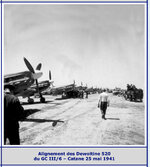- Thread starter
- #21
Glenn Sprouse
Airman
Hello,
Some others details:
No "Masque de Tragédie" on the tail during BoF.
N°277 is an early serie D.520, so, early air scoop each side of the nose
Antenna mast NMF and "chamois "color probable behind the rear cockpit windows
HTH
Stéph
Ok, I just found the model you did in 2018 of this aircraft.
**** FINISHED: GB-39 1/48 Dewoitine D.520 – Battle for France to Battle of Britain
First, it is beautiful. Wonderful job!
Second, I see exactly what you are talking about in regards to color placement. I will do this on my digital aircraft as well.
Again, great job on the model.


